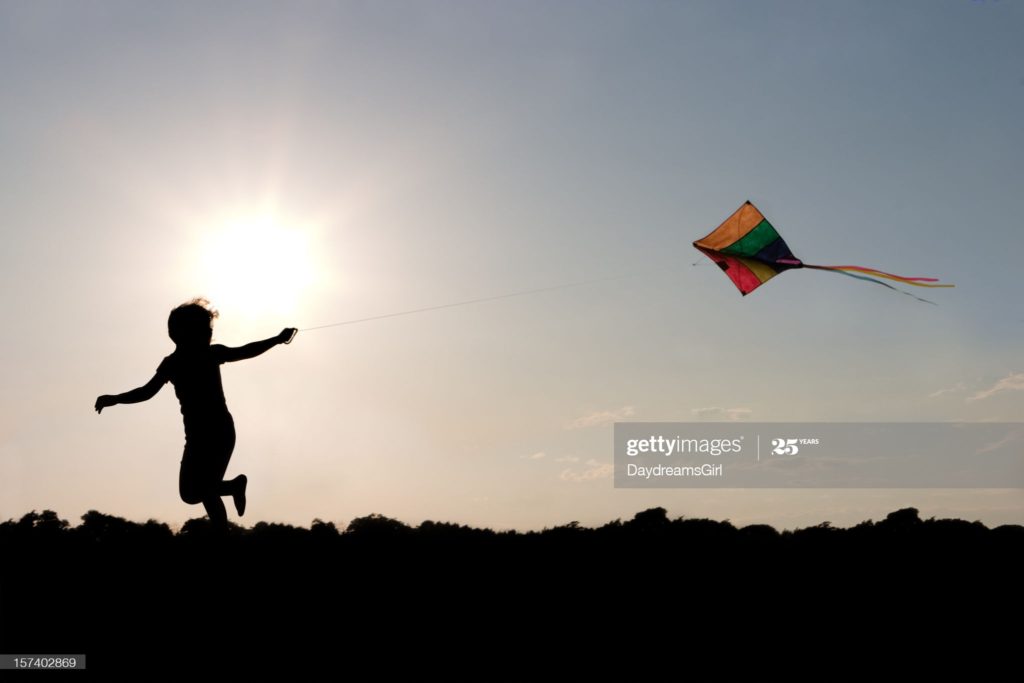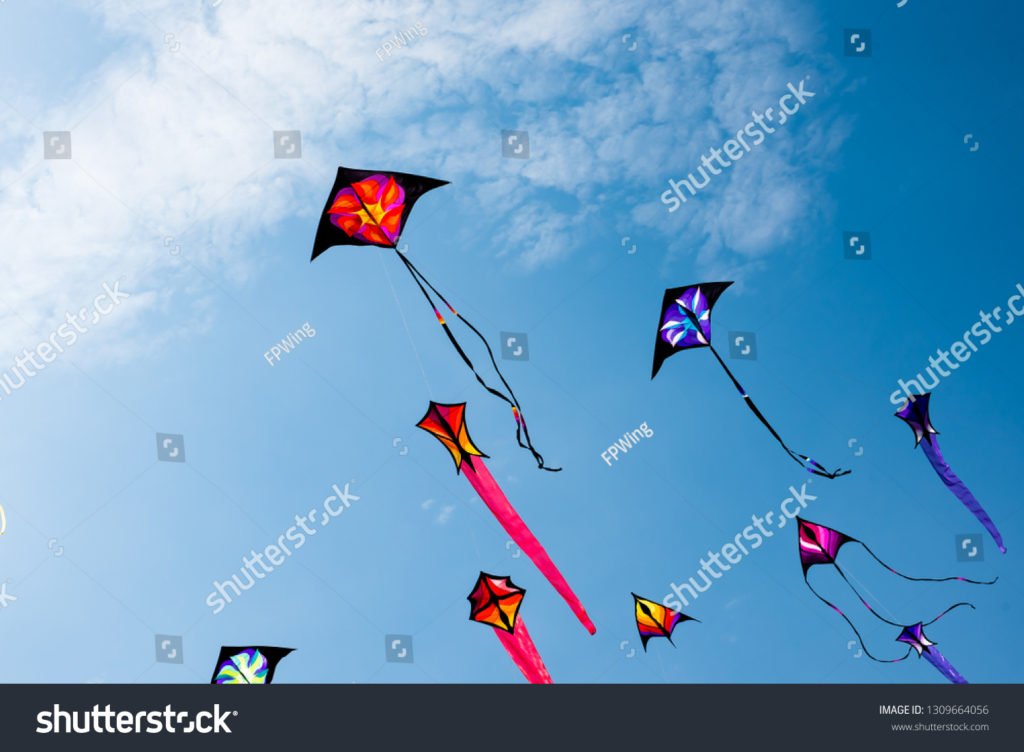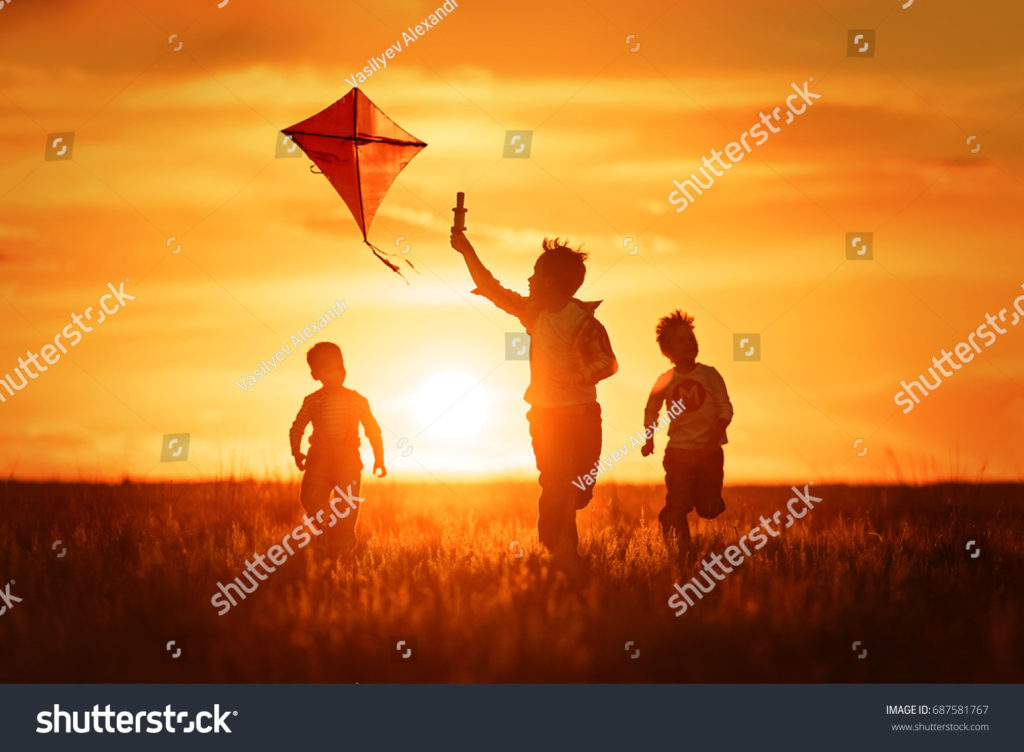
The bright blue sky, lined with white cotton candy puddles of clouds and freckled with tiny squares of color, inhales gushes of adrenaline for days, leading up to the 15th of August. While the nation reels in threads of patriotism and pride for the motherland, residents-young and old-perch on top of their roof and terrace, sitting intently on their haunches, to cannonball the words “Kai po che”,” Aayi-Bo-kaate” or “kaat di”.
While the eyes are tracing the lazily descending kite, cut-off from its manjha, the ears are beginning to collect the seismic vibrations of foot-stamps. Swift pair of legs carrying an agile body, crisscross through the gallis (lanes), charging towards the sinking kite. Dodging rickshaw-walas and cars with equal ease, jumping over footpaths and building-alleys with equal proficiency, are the famous ‘kite-runners’ sprinting to collect the kite before the rival block does. The higher the kites surge, the higher is the adrenalin rushing through the veins. The flyers feel it, the kite runners feel it, the on-lookers feel it, the sky breaths it. For the busy tradesmen and shoppers, it’s a game of vanity; for young boys and girls, it’s a matter of pride. And although the scene is unfolding right here in the bustling lanes of Old Delhi, the likeness of the above anecdote can be seen throughout the country.
The earliest written evidence of kite flying comes from ancient Greece, dating back to the 14th century BC. Later it also finds a mention in the historical parchments of Han dynasty of China d, which reigned between 3rd Century BC and 3rd century AD. The Chinese general Han Hsin used it as a part of his military strategy to besiege a town. The popularity of kites soon spread to the neighboring lands. Kites arrived in Korea around the 6th century AD. Buddhist monks brought kites to Japan in 7th century AD. They gained popularity in the Japanese culture during the Edo period (1600 AD-1800 AD). They were believed to avert evil spirits and invoke a good harvest. The European traveler Marco Polo was the first person to document the craftsmanship that went behind the production of kites. There is an interesting story of the American Stateman and scientist Benjamin Franklin, and his son William, conducting an experiment by flying a kite in the storm to prove that lightning is in fact electricity. In the modern period, inventors such as Sir George Cayley and the Wright brothers experimented with kites and contributed to the evolution of airplanes. Military kites were developed during World War 1 and World War 2. The British, French, Russians and Italians had kite units for enemy observation and used man-lifting kites. In the 21st century, hand-gliders and parachutes trace their ancestry to kites.

The Chinese travelers F Hien and Huin Tsang are conventionally credited with introduction of kites in the Indian Subcontinent. Since its inception into the Indian culture, the tradition of kite flying has been an integral part of it. In rose in prominence during the Mughal regime. Mughal rulers gave patronage to kite competitors. Kites regularly featured in medieval paintings. The tradition of patronage to kite makers to expand the market of production and the promotion of kite flying was continued by successive generation of rulers and Nawabs as well.
In contemporary India, we have the privilege of witnessing this history as it has been preserved and extended over centuries, upon a visit to the kite museum of Ahmedabad, in Gujarat. The Tourism Department of Gujarat also hosts the International Kite festival every year on the banks of Sabarmati river in Ahmedabad. It is hosted on the occasion of Uttarayan (also known as Makar Sankranti), which marks the beginning of the harvest season in India. India being a largely agrarian country, assigns a lot of importance to the festivals of the agrarian calendar and the soaring kites are a celebration of the same. The Telangana government is undertaking an initiative on similar lines. Since the pre-Independence era, kite flying has been an expression of one’s love and loyalty for their motherland. When the Simon Commission arrived in India to institute structural changes in the system, it was welcomed with “Simon Go Back” slogans. These slogans were scribed on banners, flags and kites that were then released in huge numbers to register native dissent.
While the tradition of flying kites on Makar Sanktranti and Independence Day enjoys wide popularity amongst the masses, it has caught the ire of many sections of policy-makers, animal rights activists, civic bodies and environmentalist. The Chinese manjha, the most preferred option for kite flyers, is guilty of inflicting lethal injuries to birds and humans alike. There are many reports of motorcyclists and others having their throats cut by manjha – especially when driving through hanging strings. The metal in the Chinese manjha allegedly can damage high voltage electric wires and electrocute the flyer. However, even a ban on Chinese manjha by the National Green Tribunal has not brought about much of a positive change or awareness amongst the people and it continues to be used largely because of the unavailability of sturdy, cheap and sustainable substitutes.

If we were to compare the popularity of kite flying tradition today with that of 3 decades ago, it is evident that this centuries old tradition is struggling to stay afloat. In an interview with Media India, Baldev Raj – a 75-year-old, retired railway officer living in Delhi, reminisces saying,” the sky used to turn into a rainbow, I am not exaggerating but there used to be no space for birds to fly. Today, I see the number of kites in the sky have reduced.” The numbers become even more abysmal in the pandemic reeling world, as attested by the kite sellers of Old Delhi’s Lal Kuan bazaar, the heart of city’s kite market which also has sisters in Lucknow, Bareilly, Rampur, Mahim Chowpatty, Peshawar, Dhaka, Islamabad and Kabul.
Albeit, the statistical data on the decimating sale of kites might prove a disappointing news, we need to cherish the spirit and essence of kite flying which becomes even more integral when one places it in the backdrop of the current world scenario. A kite is able to fly high and attain new heights only when it flies, resists, survives and utilizes the winds which blow against it. It enjoys the liberty and freedom to fly high so long because it has the sturdiness and assurance of the manjha. Dancing amongst the sunrays, it represents hope and growth towards a better future.

